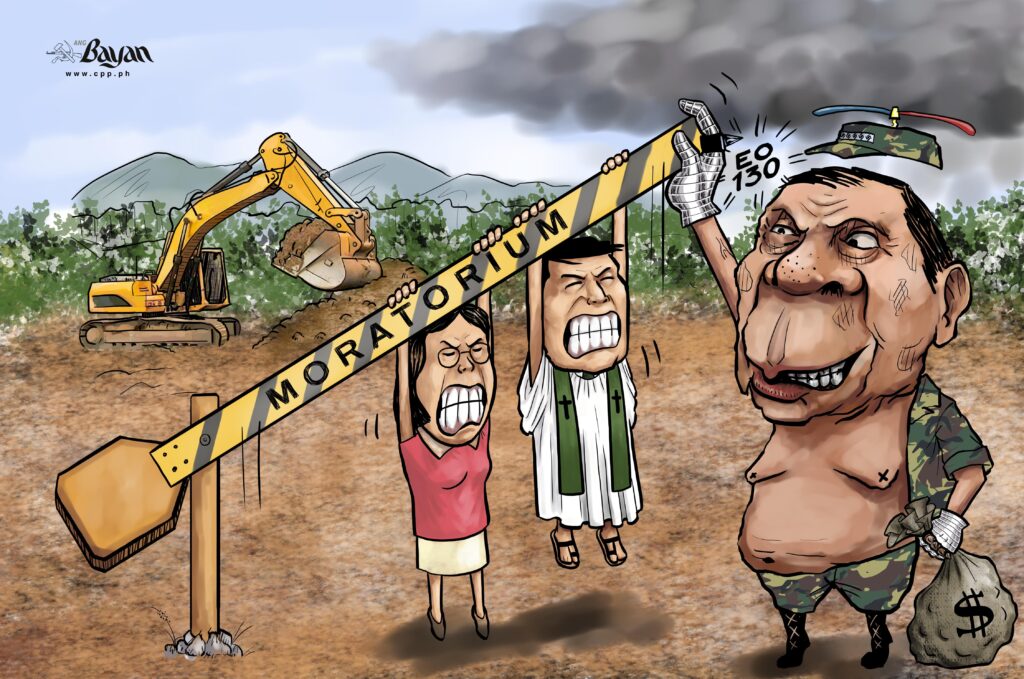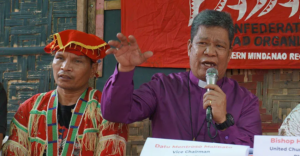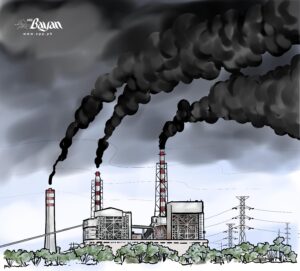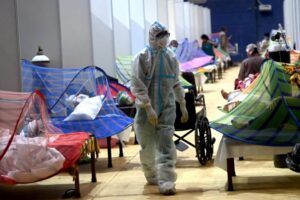Massive damage caused by destructive mining


Rodrigo Duterte issued last April 14 Executive Order 130 which ended the 9-year moratorium on new mining projects. The moratorium was put in place in 2012 by the Aquino regime on some protected areas and tasked Congress to craft a new tax regime for mining companies. At that time, there were 291 new mining applications. The order stemmed from the Philiipine Mining Act of 1995.
The lifting of the moratorium and the continued operations of destructive mining in the country will deal more blows against the people. Aside from allowing mining companies to import minerals (which include soil), revenues from the new mining operations are set to be used to pay for the billions upon billions of pesos of debt the state has incurred. The lifting is also said to attract foreign capital to fund Duterte’s anomalous and pro-foreign infrastructure projects under the Build, Build, Build program.
Among those set to be allowed are the extensive operations of Sagittarius Mines Inc. (SMI), KingKing Mining Corporation and Silangan Mindanao Mining Corporation—all in Mindanao and rejected by the people.
According to the regime’s officials, the government is set to gain P21 billion if 100 new mines are opened. But according to the Center for Environmental Concerns, the government can only exact 8%-10% of revenues in mining contracts. In return for these revenues, mining companies will be allowed to export minerals valued up to ₱210 billion which otherwise should serve the local economy.
In reality, the mining sector contribute very litte to the country’s economy. In 2020, its share of the gross domestic product was only 0.75%. According to the Ibon Foundation, the state collected only ₱15.5 billion in taxes, levies and royalties from the industry, equivalent to 0.07% of all tax collections.
The industry also employ only 1% of the labor force. According to government data, mining employed around 190,000 in 2019. The new order is said to create 42,000 new jobs but this is only a small fraction of the number of unemployed and workers who continue to find themselves out of work due to the overlong longdown.
On the other hand, local and foreign mining firms are swimming in profits even during the height of the pandemic. One of these in Nickel Asia, which owns Taganito Mining Corporation, Rio Tuba Nickel Mining Corporation, at Cagdianao Mining Corp/ East Coast Mineral Resources Corporation. Nickel Asia’s net profit balooned to ₱4.07 billion in 2020, 53% higher compared to its ₱2.63 billion net profit in 2019. Philex Mining Corporation also registered a net profit of ₱1.16 billion, 645% higher from 2019. These companies’ operations are some of the most destructive in the country.
The EO 130 was met with left and right protests from environmental groups, the Catholic church and other democratic sectors. This will only bring added death and destruction to the country, they said. Among those who protested is the Marbel diocese which have been fighting to keep SMI operations closed in Tampakan, South Cotabato. Groups such as Caraga Watch, Bayan Muna, Kalikasan Network, Panalipdan Mindanao and many more who have fought destructive mining for decades likewise protested.
According to the Kakikasan Network, opening new mines will result in more destruction to the environment. There have been numerous cases of mines destroying water and food supply, as well as forests and its biodiversity. Among its effect is the more frequent and deadlier flooding which has destroyed lives and billions worth of livelihood.















